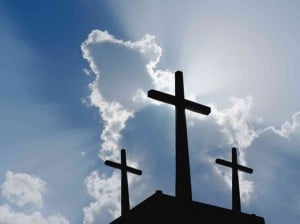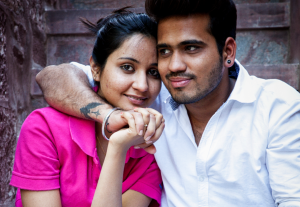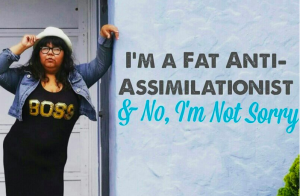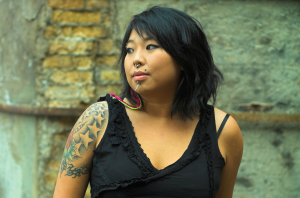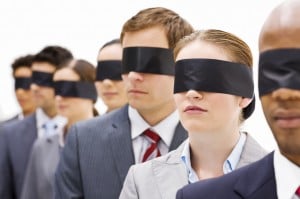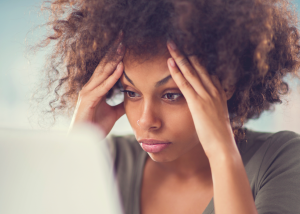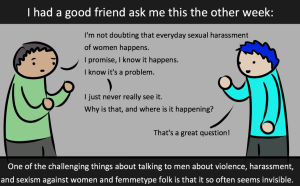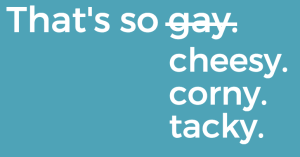
A person wading through shallow floodwater.
Not all climate change victims are created equal. There are communities of society that experience climate change more intensely and destructively than the rest, and it’s not based solely on location.
People of color, poor people, and women are most adversely affected by climate change. They are more likely to be negatively impacted by climate change than men, especially women in developing countries and the global south.
Why? Well, in short, because of the same gender inequality that already persists in our societies. like education and employment discrimination. Climate change only worsens what is already happening.
The burdens of climate change (like displacement, agricultural, and economic loss) disproportionately impact women from low-income communities, particularly in the Global South and Indigenous communities, more than in than in wealthy communities and the western world.
Women from these regions often deal with lacking infrastructure and are more dependent on natural resources in everyday life. And, though studies show that women are most impacted, we are often not involved in the policy and decision making processes for climate change initiatives and solutions.
One of the big takeaways from this year’s UN Climate Summit was the importance of promoting gender equality and women’s leadership in climate policy. One woman in attendance summed it up: “There cannot be climate justice without gender justice.”
Women are as much a part of the solution for climate change impacts as they are the primary victims, but this fact is not being recognized enough. The reality that women are more intensely impacted also means they deserve to be leaders in the climate change movement.
To be sure, our current responses to climate change do not just fail women; they also do not do enough to include the full spectrum of people and genders impacted by the inequalities and impacts of climate change.
Women, more so than their male counterparts, know how dire these environmental changes are firsthand and deserve to be equal stakeholders at every level of our climate movement from grassroots to policy and politics.
Here are 5 reasons we need gender conscious responses to climate change:
1. First of all, not everyone identifies as a man or a woman.
Gender is fluid and goes far beyond your sex. The same inequalities that exist in our greater society — such as those placed on non-binary folks who do not identify as man or woman — also exist in the climate change movements.
Entire communities’ climate experiences, issues, and potential solutions are being routinely ignored.
Relief efforts during natural disasters, which are becoming more frequent and intense due to climate change, regularly exclude or fall short of adequately assessing, informing, and aiding queer and trans communities.
Discrimination and stigma leave LGBTQ/GNC peoples especially vulnerable to climate-related displacement and homelessness because emergency shelters are not always equipped to aid their needs. Even worse, this stigma often plays out in how our media rarely covers the experiences and stories of LGBTQ disaster victims.
A more expansive, gender-conscious perspective of climate change would urge organizations — from grassroots to regulatory — to take into account the importance of including all identities when approaching the extent of climate changes impacts and possible resolutions.
“The [climate policy and regulatory] spaces are historically spaces for men,” said Laura Cooper Hall, a former gender and finance Fellow at Women’s Environment & Development Organization (WEDO).
“I think in terms of a real transformative future there really needs for all perspectives and identities need to be included explicitly.”
2. Being the most impacted, women have firsthand experiences that can lead to creative and practical solutions.
Globally, women make up 80% of the world’s climate refugees. They’re 45-80% of the agricultural workforce in rural areas and are responsible (along with girls) for collecting nearly two-thirds of the household water in developing countries.
When natural disasters like hurricanes, cyclones, or droughts hit, women around the world experience the loss in a very real way. For that same reason, they, better than anyone else, will know which solutions will work best.
Better yet, their ideas are directly connected to real-life situations and remedies.
“The thing that really inspires me is so many of the women we work with on the frontlines, they always say we don’t want to be seen as victims,” said Osprey Orielle Lake, Founder and Executive Director of WECAN. “Because we’re also the solutions.”
3. Right now, we don’t have consistent leadership that reflects people of all genders.
Only recently have women increasingly become a part of the mainstream discussion about how best to tackle these climate change. But even in cases when a ciswomen/man gender balance is accomplished, it is rarely consistently maintained, and for trans and gender non-conforming peoples it’s nearly non-existent.
Between 2013 and 2016, six ciswomen delegates were elected as chairs (or co-chairs) at the United Nations Framework Convention on Climate Change, but this year only three ciswomen filled those positions, according to a report by the on their annual conference.
You’d be hard-pressed to find any formal LGBTQ/GNC organizations or representation at conferences like the Framework Convention or the UN Climate Talks.
Diverse and varied perspectives and experiences must be a critical and necessary part of any and all climate talks — not just when the world (or Twitter) is watching, but always.
4. Climate change magnifies existing inequalities — including gender inequality.
“Reinforced gender inequality really reduces women’s physical and economic mobility, their voice, their opportunity in many places,” said Lake. “That makes them a lot more vulnerable to environmental stress.”
All those same systems of inequality that function in greater society are at work in the climate change movement.
No, climate can not be racist or sexist but people can and people — whether in our federal and local government, climate organizations, or world regulatory organizations — decide our climate policy, responses, and solutions.
“Climate change and gender justice, because of its personal effect on people and because people have personal identities, you can’t disconnect them,” said Cooper Hall.
When we solve gender inequality and have achieved true gender justice, then we can will have more well-rounded and genuinely equitable responses to climate change — starting with diverse representation at Climate Change conferences and talks and leading to more specific bottom-up initiatives that put community first and corporations last (Think: The Tiny House Warriors in Canada or low-cost reflective paint by Mahila Housing Trust used to combat heat waves in India)
5. Considering gender as a climate change factor benefits everything!
Keeping gender equality in mind when planning for and implementing our climate future is valuable to everyone, so why wouldn’t we want that?
“It’s a win-win for everyone,” said Atti Worku, founder of Seeds of Africa, a New York-based nonprofit working toward equality in education for children and communities in Ethiopia (hit particularly hard by climate change related droughts) and Africa. “It’s not only because it’s a good thing to include women or whatever, it’s also just beneficial to have women involved.”
More diverse leadership means more diverse ideas and creative solutions. It also means more minds working together to solve our climate challenges.
“Environmental sustainability and gender equality are interdependent,” said Worku. “If you educate girls, for example, then we’re addressing a future where women and girls will be scientists. They will be in government. They will be making decisions that are for the needs of everyone.”
***
I didn’t always see my gender as being connected to the impacts of our climate. I’ve not felt any more connected to nature than the next person.
I don’t live in a flood zone and though I am a Black woman — and, as such, more likely to be disproportionately impacted — I have been lucky enough to not have had a physical experience with a hurricane, wildfire, or other climate change-related disaster.
I initially drew the connection quite randomly on the subway. I saw an ad with a poem about the Christian Bible’s Eve having named all the animals in nature.
“If Eve were here now, she’d probably be a badass environmental activist or climate change policy-maker,” I thought to myself. “But she’d be terribly overqualified and definitely underpaid.”
I immediately Googled “women in climate change” like the complete nerd that I am and found myself in a wormhole of women fighting for a seat at the table in an uncharted climate future.
They aren’t asking for anything grand. Only that all people — of every gender and identity — be included in how we respond to climate change, how we go about making our future.
I don’t think that’s too much to ask, do you?
[do_widget id=’text-101′]
Maya Lewis is an Everyday Feminism Reporting Fellow. Maya is a 20-something Brooklynite, by way of Maryland. She spends her time writing about things she believes are interesting and finding ways to trick people into reading them.
Search our 3000+ articles!
Read our articles about:
Our online racial justice training
Used by hundreds of universities, non-profits, and businesses.
Click to learn more





